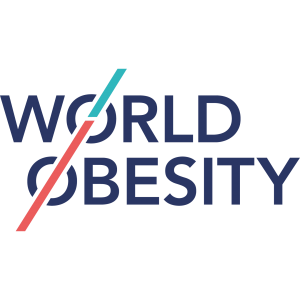Food Labelling: Government Guidelines & Recommendations
European Food and Nutrition Action Plan 2015–2020
The intention of the Action Plan is to significantly reduce the burden of preventable dietrelated noncommunicable diseases, obesity and all other forms of malnutrition still prevalent in the WHO European Region. It calls for action through a whole-of-government, health-in-all-policies approach. Its priority actions will contribute to improving food system governance and the overall quality of the European population’s diet and nutritional status. See more.
Global Action Plan for the Prevention and Control of Non communicable Diseases 2013-2020
The WHO Global Non-Communicable Disease Action Plan 2013-2020 follows on from commitments made by Heads of State and Government in the United Nations Political Declaration on the Prevention and Control of non-communicable diseases (resolution A/RES/66/2), recognising the primary role and responsibility of governments in responding to the challenge of non-communicable diseases and the important role of international cooperation to support national efforts. See more.
WHO - Press release on the draft document “WHO guiding principles and framework manual for front-of-pack labelling for promoting healthy diets”
The Permanent Mission of Italy to the International Organizations in Geneva expresses concern over the content of the draft document titled “WHO guiding principles and framework manual for front-of-pack labelling for promoting healthy diets” and about the modalities of its drafting and early circulation. See more.
Guiding principles and framework manual for front-of-pack labelling for promoting healthy diet
Front-of-pack labelling is an important policy tool for countries to help consumers make healthier food choices. This document – WHO guiding principles and framework manual for front-ofpack labelling for promoting healthy diets – has been developed to support countries to develop, implement, and monitor and evaluate an appropriate front-of-pack nutrition labelling system. See more.
Better food and nutrition in Europe: a progress report monitoring policy implementation in the WHO European Region
This report on progress achieved in the WHO European Region and Member States in implementing the European Food and Nutrition Action Plan 2015–2020 presents selected epidemiological data on the nutritional status of populations throughout the Region and on implementation of policies recommended in regional and global frameworks to promote healthy nutrition and prevent obesity. The data contained in the report are derived from the responses of Member States to the WHO Global nutrition policy review questionnaire. See more.
Portuguese consumers’ attitudes towards food labelling
The aim of this report is to show how Portuguese consumers use and understand nutrition information on food labels in their daily lives. It starts by presenting the theoretical framework for exploring the research goals. This is followed by a description of the methods, including the overall research approach, data collection techniques and data analysis procedures. Primary data were collected in a survey of 1127 Portuguese consumers and in four focus groups that explored differences among adults who were strongly conscious about healthy eating, adults who were weakly conscious about healthy eating, adults with less education and young people aged 15–18 years. See more.
Report of the Commission on Ending Childhood Obesity
The overarching goals of the Commission on Ending Childhood Obesity are to provide policy recommendations to governments to prevent infants, children and adolescents from developing obesity, and to identify and treat pre existing obesity in children and adolescents. The aims are to reduce the risk of morbidity and mortality due to noncommunicable diseases, lessen the negative psychosocial effects of obesity both in childhood and adulthood and reduce the risk of the next generation developing obesity. See more.
Guideline: Sugars intake for adults and children
The objective of this guideline is to provide recommendations on the intake of free sugars to reduce the risk of NCDs in adults and children, with a particular focus on the prevention and control of unhealthy weight gain and dental caries. The recommendations in this guideline can be used by policy-makers and programme managers to assess current intake levels of free sugars in their countries relative to a benchmark. They can also be used to develop measures to decrease intake of free sugars, where necessary, through a range of public health interventions.See more.
Guideline: Sodium intake for adults and children
The objective of this guideline is to provide recommendations on the consumption of sodium to reduce NCDs in most adults and children. The recommendations in this guideline can be used by those developing programmes and policies to assess current sodium intake levels relative to a benchmark. If necessary, the recommendations can also be used to develop measures to decrease sodium intake through public health interventions such as food and product labelling, consumer education, and the establishment of food-based dietary guidelines. See more.
PLAN de colaboración para la mejora de la composición de los alimentos y bebidas y otras medidas 2020
The PLAN includes the reformulation commitments of the manufacturing and distribution sectors for various types of food and beverages commonly consumed by children, youth and families, and focuses on the reduction of added sugars, salt and saturated fats. See more.
REGULATION (EU) No 1169/2011 provision of Food Information for Consumers (FIC)
Provision on food information to consumers harmonised the information displayed in the food labelling across Europe. See more.
Action Plan for the Prevention and Control of Noncommunicable Diseases in the WHO European Region
The proposed Action Plan for the Prevention and Control of Noncommunicable Diseases in the WHO European Region 2016–2025 continues and updates the Action Plan for implementation of the European Strategy for the Prevention and Control of Noncommunicable Diseases 2012–2016. Taking account of new evidence, exciting developments, existing commitments and progress of Member States, the Action plan focuses on priority action areas and interventions for the next 10 years in order to achieve regional and global targets to reduce premature mortality, reduce the disease burden, improve the quality of life and make healthy life expectancy more equitable. See more.
Fats and fatty acids in human nutrition: Report of an expert consultation
Knowledge of the role of fatty acids in determining health and nutritional well-being has expanded dramatically in the past 15 years. In November 2008, an international consultation of experts was convened to consider recent scientific developments, particularly with respect to the role of fatty acids in neonatal and infant growth and development, health maintenance, the prevention of cardiovascular disease, diabetes, cancers and age-related functional decline. This report will be a useful reference for nutrition scientists, medical researchers, designers of public health interventions and food producers. See more.
REGULATION (EC) No 1924/2006 on nutrition and health claims made on foods
An increasing number of foods labelled and advertised in the Community bear nutrition and health claims. To ensure a high level of protection for consumers and to facilitate their choice, products put on the market must be safe and adequately labelled. See more.
Global Strategy on Diet, Physical Activity and Health
In May 2004, the 57th World Health Assembly endorsed the World Health Organization Global Strategy on Diet, Physical Activity and Health. The Strategy was developed through a wide-ranging series of consultations with all concerned stakeholders in response to a request from Member States at World Health Assembly 2002 (Resolution WHA55.23). The Strategy, together with the Resolution by which it was endorsed (WHA57.17), are contained in this document. See more.
Best buys and other recommended interventions for the prevention and control of noncommunicable disease
This document provides policymakers with a list of ‘best buys’ and other recommended interventions to address non-communicable diseases based on an update of Appendix 3 of the Global Action Plan for the Prevention and Control of NCDs 2013–2020. A list of options is presented for each of the four key risk factors for non-communicable diseases (tobacco, harmful use of alcohol, unhealthy diet and physical inactivity) and for four disease areas (cardiovascular disease, diabetes, cancer and chronic respiratory disease). See more.
Global Nutrition Policy Review 2016-2017 Country Progress in Creating Enabling Policy Environments for Promoting Healthy Diets and Nutrition
The Global Nutrition Policy Review 2016–2017 is the report of the second comprehensive analysis of nutrition-related policy environment, coordination mechanisms, available capacities and actions being taken in the WHO Member States. The findings presented in this report will help in tracking progress towards achieving the commitments made at the 2014 Second International Conference on Nutrition and will also serve as a baseline for monitoring country actions in achieving the commitments of the UN Decade of Action on Nutrition (2016–2025). See more.
REDICLAIM: “REduction of DIsease risk” CLAIMs on food and drinks
The EU-funded REDICLAIM: to understand the impact of legislation in the “Reduction of Disease risk” CLAIMs on food and drinks. The overall aims are to achieve effective compliance with better regulation and to contribute to the enhancement of innovative and competitive products. See more.
Guide to creating a front of pack (FoP) nutrition label for pre-packed products sold through retail outlets
This guidance supports the development of front of pack nutrition labels that are compliant with the UK Health Ministers’ recommendation on the use of colour coding as an additional form of expression and with EU Regulation No. 1169/2011 on the provision of food information to consumers. The guidance was developed by the Department of Health, the Food Standards Agency, and devolved administrations in Scotland, Northern Ireland and Wales in collaboration with the British Retail Consortium. See more.
The State of the World’s Children 2019. Children, Food and Nutrition: Growing well in a changing world
At a time when one in three children under 5 is not getting the nutrition they need to grow well, The State of the World’s Children 2019 examines children’s malnutrition today. Communities increasingly face a triple burden of malnutrition: despite declines, 149 million children aged under 5 still suffer from stunting and almost 50 million from wasting; 340 million children suffer from the hidden hunger of deficiencies of vitamins and minerals; and rates of overweight are rising rapidly. See more.
Technical guidance on nutrition labelling
This Guidance explains the nutrition-related requirements under Regulation (EU) No. 1169/2011 on the provision of food information to consumers (hereinafter referred to as EU FIC). This is a living document, which will be reviewed periodically and topics will be added as necessary. It will be amalgamated with technical guidance on general labelling and allergens issues once this is available. See more.
The Eatwell Guide
Lots of pre-packaged foods have a food label on the front of pack which shows the nutrition information per serving. They also refer to reference intake which tells you how much of each nutrient should be included in the daily diet. The percentage refers to the contribution that the product makes to the reference intake for each nutrient. See more.
Food labels
Nutrition labels can help you choose between products and keep a check on the amount of foods you're eating that are high in fat, salt and added sugars. See more.
Time to Solve Childhood Obesity
This report is aimed at politicians and policy makers. The Government had set the ambitious goal to halve childhood obesity in by 2030. However, current trends show that we are unlikely to meet that target. See more.
On October 26th, 2021, The Chamber of Deputies of Buenos Aires mandated front-of-package warning labels in Argentina during a special session. The law had 220 votes in its favour, marking a step in the right direction to reinforce consumers’ right to information, particularly the content of food products that may be detrimental to health.
Moving forward, front-of-package warning labels in the shape of black octagons with the inscription "Excess in ..." will be obligatory to warn consumers about the high amount of sugar, fat, and/or sodium in the products. The warning labels are based on the Pan American Health Organization nutrient profile system which aligns with the recommendation in the Dietary Guidelines for the Argentine Population (GAPA).
The sale and advertisement of products with warning labels will be prohibited in school settings to generate a healthier environment for children and adolescents.


